Brushing, Flossing, & Water Flossing
Orthodontic Oral Hygiene
Berkowitz Orthodontics believes in achieving excellence in all aspects of our outcomes
We agree that when you have braces, it’s very important to brush and floss after every meal in order to keep your teeth and gums healthy throughout your orthodontic treatment.
Brushing with Braces
Brush your teeth after every meal with a soft-bristled, small-headed toothbrush and fluoride toothpaste. Certainly as an alternative, you can use a powered toothbrush to increase your brushing effectiveness and efficiency. Brush the outside and inside surfaces of your teeth using small, gentle, circular motions while positioning the head of the toothbrush at a 45-degree angle to the gum line (A). Brush your teeth’s chewing surfaces (B) and the inside surface of your front teeth (C) using short, gentle, back-and-forth motions. Pay close attention to the areas around your brackets and especially concentrate on the areas between your brackets and gingival tissues (gums).
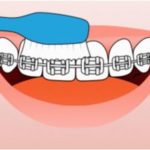 |
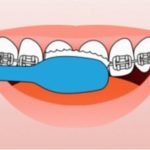 |
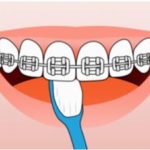 |
| A | B | C |
Flossing with Braces (Standard Method: Most appropriate for adults)
Flossing after every meal will help keep your teeth and braces clean, which will also help keep your treatment time on track. To floss with braces, use a floss threader or special orthodontic floss to thread the floss behind each wire (A). Wrap the ends of the floss around your pointer fingers of both hands, leaving a few inches of taut floss between them (B). Gently slide the floss between each set of teeth using the back and forth motion. Floss the sides of each tooth beneath the gum line to remove plaque and food particles (C). Repeat this process until you’ve flossed all of your teeth. If you find that your floss is not removing all the food particles between your teeth and around your braces, ask us about a WATER FLOSSER!
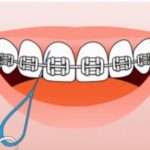 |
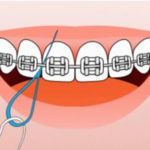 |
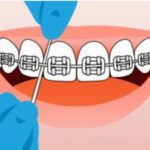 |
| A | B | C |
Water Flossing with Braces (Advised Method for Children and Adults)
Waterpik – The Easy and Most Effective Way to Floss
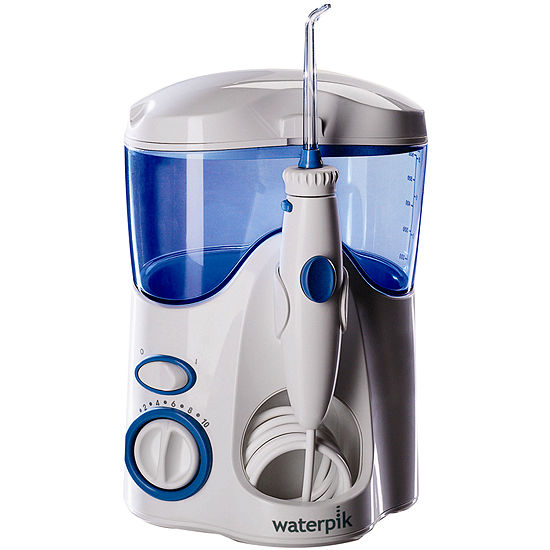
Why Water Flosser?
Clinically proven efficiency:
-ADA (American Dental Association) Accepted
-Removes up to 99.9% of plaque from treated areas
-Up to 50% more effective than string floss for improving gum health
-Up to 56% more effective than interdental brushes for removing plaque and improving gum health
We all know that brushing our teeth is an essential part of oral hygiene. But what about flossing? According to statistics, less than a third of the US population floss on a daily basis. About a third don’t do it all.
This is a mistake, since brushing your teeth isn’t enough to ensure the removal of all food particles that cause bacteria growth. A toothbrush, no matter how advanced, can’t reach the crevices between your teeth, which is why flossing is necessary if you really want to get rid of all the plaque.
However important, flossing is fairly inconvenient. This is in reference to the traditional string flossing, of course.
Luckily, there’s a much easier solution, and it’s water flossing. It does a much better job at removing plaque and it’s a lot easier to use.
Clinical trials showed that it’s 51% more effective than string flossing, thanks to its ability to remove 99.9% of plaque. It also helps reduce bleeding and gingivitis much better than the traditional option. It features 7 different tips, which ensure a very deep clean. It is the leading name in water flossers, and offers studies that show it is 2X as effective as dental floss and reducing gingival bleeding, and 29% more effective as dental floss at removing plaque.
Waterpik is the first in its class to earn ADA Seal of Acceptance based on findings that its safe and shows efficacy for removing plaque along the gumline and between teeth and helps to prevent and reduce gingivitis.
“This product was shown to reduce plaque and gingivitis in areas between the teeth, often the most difficult areas for patients to effectively clean. By granting the ADA Seal of Acceptance to the Waterpik Water Flosser, consumers for whom these devices are appropriate can be confident that they can be a safe and effective component of their daily oral care when used as directed.”
Summary
Brushing is not enough. Despite the fact that virtually everyone brushes their teeth, half of all Americans have gum disease. Clinical research confirms that the Waterpik Water Flosser is significantly more effective than string floss for reducing gingivitis and improving gum health. That’s why it is the #1 choice among dental professionals. And if you have dental work like implants, crowns, or braces, the Waterpik Water Flosser is essential.

